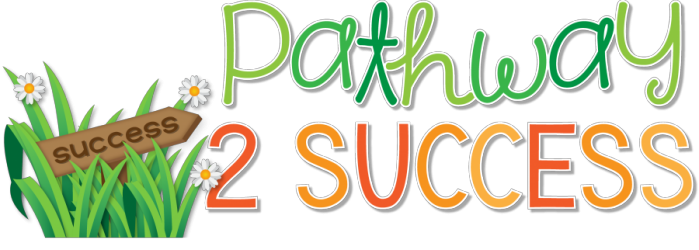
How do I integrate social emotional learning? This is a question many educators are asking themselves. The good news is that there are countless ways to add SEL into the classroom, without it taking over your entire day. Social-emotional learning is a huge umbrella that accounts for the way we build relationships and teach meaningful skills from self-awareness to decision-making and everything in between.
This list is designed to give teachers and administrators options; no educator can do all of these activities all the time. Instead, choose a few and give them a try in your classroom to see what works best for you and your students.
Just a note: The majority of links below are free. This is intended to provide you with additional support to get started integrating SEL into your classroom. Every classroom deserves that. I’ve also included some extra paid activities if you need something more. I hope they make a difference for you and your students.

Maybe most importantly, these strategies are largely universal; they can be done with pre-schoolers all the way up to high schoolers. They can be done in a general education classroom, special education resource room group, a homeroom block, or an advisory period.
1. Daily Greetings
One of the simplest SEL techniques is starting the day with personalized greetings at the door. Have students choose the greeting (wave, fist bump, or thumbs up), or simply just say good morning to each student by name as they walk in.

2. Emotions Check-In
According to some research, just expressing our emotions can help alleviate those very feelings. Use a daily emotions check-in to help students share how they are feeling and what they need to be at their best.

3. Class Circle
Once a day, gather as a group in a circle. Use targeted relationship-building questions to share. It’s important to give everyone a chance to share who wants to. And on that note, it’s also important to allow kids to pass if they’re not comfortable sharing one particular question.
4. Journal Writing
Provide a SEL journal prompt each morning for kids to respond to. If your students are still working on writing skills, they can draw their responses and share aloud. SEL journaling provides a safe space to open up and allows you to integrate SEL with academic skills in a natural way.

5. Gratitude List
Once a day (or when time allows), have students write out a gratitude list. They should list out 3 things they are grateful for that day. These can be big things, like family or friends, but they can also be seemingly small things, like the smell of chocolate chip cookies or comfortable shoes. When we practice gratitude, we help kids and teens feel happier, more focused, and calm.
6. Morning Meeting
Start each day with a guided morning meeting. Any educator can implement a daily morning meeting some easy steps: greetings, a SEL-focused topic, guided discussion questions, a few activities, and a closing or reflection.

7. Mindful Morning Check-In
Use a mindful morning check-in to start the day. It is a five-step process that involves taking 5 deep breaths, listing 4 things you notice around you, identifying 3 things you are grateful for, saying 2 positive self-talk statements, and naming 1 thing you are looking forward to for the day.

8. SEL Read Alouds
Integrate social-emotional skills and reading using read alouds and stories. The truth is that read alouds are fun and engaging for kids of all ages (even big kids). Start or end your day with a read aloud, highlighting relevant SEL skills before, during, and after the story. You can choose a read aloud to work on a specific SEL skill (empathy or friendships, for example), or you can pick up any book and see where it takes you. Use a SEL read aloud list to help get started.

9. SEL Chats
Provide a targeted SEL question (or a few questions) and have students chat to discuss. Use SEL discussion-starters, such as: What is a good choice you’ve made recently? What could you teach someone else? What are some skills you feel most confident in? These questions are helpful to build relationships within the classroom, and they also allow for further discussion of critical SEL skills (self-awareness, self-management, social awareness, relationships, and decision-making). Come up with your own questions or use these SEL task cards with prompts for the year.

10. Coping Skills Practice
Healthy coping skills are essential to learning how to manage emotions and stress. Make it a point to practice coping strategies together, such as listening to music, drawing, reading, exercising, practicing yoga, and talking with a friend. These techniques can be practiced for just a few minutes as a time as a meaningful reminder for students.
11. End-of-the-day Reflection
The end of the day is the perfect time for reflection. That includes thinking about what went well, what students learned, what they are most proud of, and how they feel. Use targeted end-of-the-day reflection questions to start the process.

12. Recite Positive Affirmations
Positive self-talk helps students feel confident and ready for success. Choose favorite positive affirmations, create a list, and read them together. A list can be read at the start of each day or before a big test.

13. Practice Mindfulness
Mindfulness is learning how to be present in the moment. This self-regulation technique helps students feel calm, focused, and happier. Start your practice with mindful breathing exercises. These can be done anytime, but really pay off first thing in the morning, in between transitions, or right before quizzes and tests.
14. SEL Art Activities
Use art activities to allow for self-expression while integrating SEL skills at the same time. Use self-portraits to focus on self-awareness. Try mindful coloring to work on healthy coping skills. You can have students work together to create a shared drawing to build teamwork skills.

15. Class Meetings
Hold a class meeting on a regular basis to review expectations and solve problems together. These become a healthy spot to work on conflict resolution skills, as students can share struggles they are working through and get feedback from others. Class meetings are also the perfect venue for reviewing class expectations on a regular basis.
16. SEL Quote of the Day
Quotes are character-building! Share a meaningful social-emotional quote on the board. Have students discuss and share what it means to them. Some favorites to start out with are, “You are enough and a work in progress all at the same time,” and “It’s never too late to stop and go down a different path.”
17. Daily Check-In Journal
Provide a daily check-in journal first thing each day. This allows students to share how they are feeling, while also integrating other SEL skills and supports that kids need. As a bonus, journaling also means students are working on their writing skills.

18. “What Would You Do?” Scenarios
Integrate SEL skills by discussing some “What would you do?” scenarios. For example, you might ask, “You have a big test tomorrow, but a friend wants you to go out to the movies. What would you do?” Have students talk and share ideas to learn and grow. Make up your own questions or grab this set to get started.

19. Brain Breaks
Breaks are a critically important part of replenishing self-regulation skills. Provide brain breaks through movement like yoga or mindful breathing exercises. Schedule them into the day (such as between tasks) or use them when you notice students just need to refocus. Here are mindful brain breaks to try with a nature theme.
20. Show-and-Tell
Once a week, give students a chance to share items and ideas that are important to them. They might share an art project they created or a new game they got for their birthday at home. This gives kids a safe space to communicate and share a piece of themselves with their classmates.
21. SEL Skill of the Day or Week
Introduce one meaningful SEL skill of the day (or week). Briefly discuss it and ask some guided questions. Then, highlight that skill when you see it in action to help students generalize it to their own lives.

22. SEL Crafts & Hands-On Activities
Provide hands-on learning opportunities with SEL crafts. Have students make a coping strategies wheel or practice mindfulness with hands-on tools. Activities that are hands-on are often memorable.
23. Play Games
Many games build social-emotional skills. Use games to fill some end-of-the-week reward time, also weaving in those social-emotional skills at the same time. Choose games you might already have in your classroom (such as Jenga and Scrabble), or use games that specifically target SEL skills.

24. Shout Out Board
Create a bulletin board in the classroom where students can give “shout outs” to others. The idea is that students can give compliments and kind feedback to their peers and teachers. For example, a student might give a classmate a shout out for helping them organize their notebook. This builds a sense of community and allows a chance to highlight SEL skills along the way.
25. AM / PM Check-In
Provide individualized check-ins for students in need. During an AM/PM check-in time, an adult might ask a student how they are doing, review goals for the day, and reflect on how the day went.
26. Weekly Goal Reflection
Meet with individual students once a week to review goals and track progress. Goal reflection meetings can just be a few minutes, but have a big impact because students are getting 1:1 support. One helpful strategy is to have an individual binder for each student to record their goals, grades, and progress.

27. Daily Jobs
Help build responsibility by assigning classroom jobs. Examples of jobs might include paper collector, technology set up, and lunch counter.
28. Provide Catch-Up and Organization Time
Everyone needs down-time sometimes. Provide catch-up and organization time to allow students the chance to re-organize materials, finish missing work, and even get a head start on future assignments.
29. SEL Question of the Day
Provide one SEL question of the day. Project it or write it on the board. Give students time to discuss with a partner and write about it.
30. Group Activities or Challenges
Help students build a stronger community by implementing group activities and challenges. Have students work in groups to design kindness posters or work through an escape room challenge.
Social Emotional Learning Curriculum
I’ve developed a complete yearlong social-emotional learning curriculum for elementary students grades 3-5. It comes with everything you need to target skills like empathy, decision-making, confidence, friendships, self-control, and more. Learn more here.

Grab your free printable poster to help remind you about SEL activities and strategies in the classroom!

Remember that it’s about finding the social-emotional learning activities that work best for you and your learners.







Leave a Reply